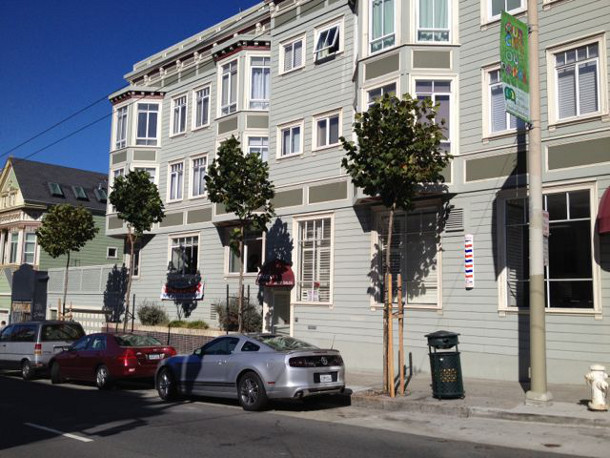
Someone thought this was a good idea: plant street trees that are already “limbed up” to provide clearance for cars, keep signs visible. No need for follow-up maintenance for the next 10 years….right?…
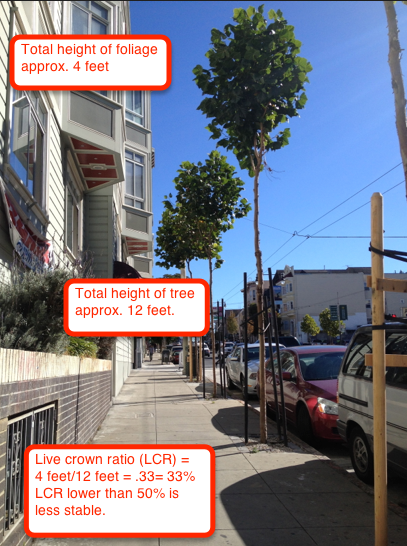
Wrong. These trees are in extreme danger of breaking in a storm, probably about 6 feet up, right above where the ties are attached. They are unlikely to last 10 years. The Live Crown Ratio (LCR), which compares the height of the live foliage compared with the height of the overall tree, is about 33 percent. An LCR of less than 50 percent is not desirable from a stability standpoint.
Math haters, relax: the numbers only confirm what your eye tells you: these trees are too top-heavy and their trunks are too tall and slender to support such weight. Notice how the trunks have very poor taper; that is, they are pretty much the same diameter at the bottom as at the top.
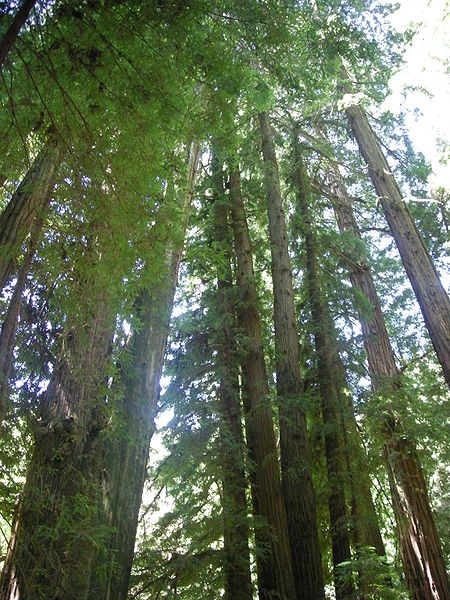
Photo from Wikimedia Commons
Trees in the middle of a forest or grove often have poor taper and low live crown ratio because they are surrounded on all sides by trees. The surrounding forest blocks the light until the only living part of the canopy is way up high. That’s fine in the middle of a forest, because the surrounding trees also protect individual trees from wind. But when a tree with low LCR is exposed to full wind forces, it can easily snap.
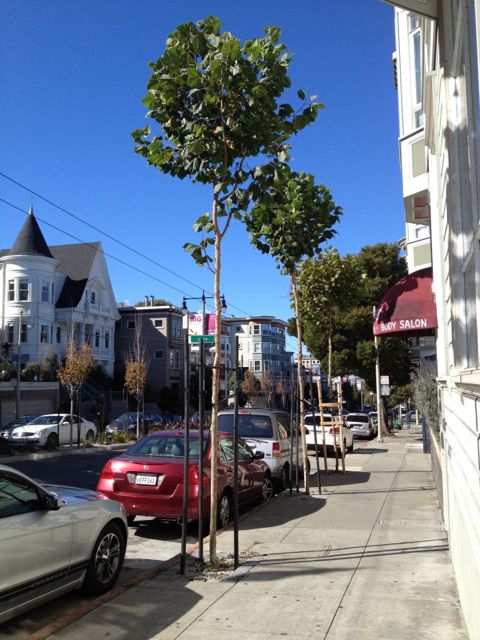
These street trees didn’t develop in the middle of a forest. Someone pruned off the lower branches. Maybe the nursery, maybe the planting crew. Someone thought this was a good idea, or they didn’t think at all.
Assuming they survive, the trees will be stake-dependent for a long time. If they do snap, they could possibly be retrained into shorter trees, if the trees have enough energy to produce any sprouts to be retrained, and anyone bothers to train them. Time will tell.
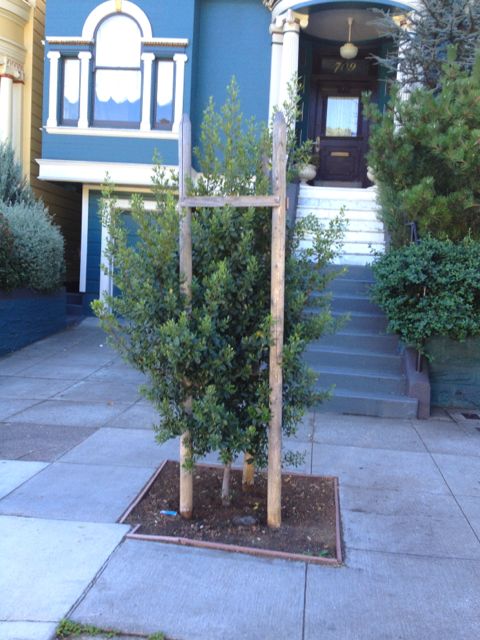
Which is easier to knock down, a supermodel perched on stiletto heels, or a squatting sumo wrestler? Those tall trees might fall off the catwalk, but this shorter, stouter specimen is ready for some wind. Assuming there are no root defects, this tree barely needs stakes and ties. A young tree with lower branches has a lower center of gravity and better taper. Because the products of photosynthesis are often used and stored close to where they are produced, the leaves on lower branches are necessary to thicken the trunk at lower points. Depending on clearance requirements, some of the lower branches can be considered “temporary.” They will need to be reduced and removed before they get too big – branches should be 1/3 the size of the trunk or less. Yes, this tree will need some brief pruning visits in the next 10 years, but it has much more chance of surviving several decades and beyond.
Get more bang for your urban forestry buck by purchasing shorter trees with low branches and a well-tapered trunk – choose sumos, not supermodels.
Ellyn Shea is a consultant and garden educator in San Francisco.






Thank you so much for bringing attention to too much limbing up; I’m seeing this a lot and it disconcerts me greatly. Now, I have some math behind my concerns
that I can communicate to others.
Also these grossly limbed up trees DON”T LOOK LIKE TREES!
Much luck to you and the trees!